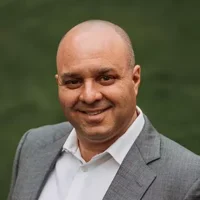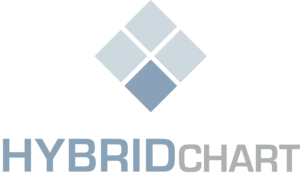Do you remember the movie The Net? It was released in 1995, and while it’s a thriller with plenty of villains and daring escapes, the part I remember most is the opening scene. Sandra Bullock orders pizza. Online. If you’re under 25 you may be wondering what the big deal is, but in 1995 this was like watching straight-up science fiction.
It can be easy to forget how far technology has come in the intervening 25 years. Consider the following fascinating statistics. According to a 1995 Pew Research article, only about 18 million US households (about 5%) had modem-equipped computers. “Typically, users go online a few times a week. But the pattern of specific activities suggest that few online features are compelling to them.
A majority (53%) send or receive e-mail at least once a week, and many (41%) perform work-related research or communication online. However, relatively small percentages engage in other activities. Just 30% get the news online once a week or more often. Smaller percentages participate in discussion groups (23%), obtain entertainment related (19%) or financial information (14%).”
Now it feels like pretty much anything can be done online, and you don’t even need a desktop computer to do it. Smartphones have revolutionized the way we do so many things. Twelve years after the release of the first iPhone, I’m now carrying a device with me everywhere that unlocks with facial recognition, can give me directions in Cookie Monster’s voice, and connects me to the internet any place I can get a cell signal.
Medicine is one of those industries where the rollout of technology feels a bit spotty. Despite the fact that 3D organ printing and blue-tooth enabled inhalers exist, many offices still use fax machines to transfer medical records. Fax machines are such old technology that some new medical students don’t even know how to use them.
One place where there has been significant advancement is in the area of rounding management and charge capture. Charge capture can be defined as the process used by doctors and other providers, like NPs and PAs, record the services and procedures they perform so they can be reimbursed for them. That information goes to the billing team to be processed and sent to insurance companies.
Charge capture historically was (and often still is) accomplished with paper. Charge capture doesn’t seem like it should be a terribly complicated process: providers write down what they do on specially designed notecards or facesheets or extra napkins from the cafeteria and take them back to the office.
Scratch the surface though, and the numerous pitfalls of paper emerge. For one thing, paper is difficult to track. Not having a mechanism to alert you if you’ve missed a charge can result in significant revenue loss. Paper can also get dropped, thrown out by accident, left in the car… and that of course triggers bigger concerns about patient privacy.
Not to mention the fact that while “I did X because of Y” is the basic definition of charge capture, in practice it’s more complicated than that. ICD-10 is an alphabet soup of codes, and which one you choose matters. Diagnosis specificity is critical for getting reimbursed properly and meeting CMS quality measures. CPT codes are not all straightforward either. Just figuring out the proper level for a visit can be tricky, and then there are codes that must have a modifier, or can’t be billed together, or don’t apply with certain insurance, or… or… or. The list goes on and on.
Enter mobile charge capture. It first came on the scene in the late 90’s but has rapidly accelerated in the past decade with the advent of smartphones and apps. Apps have come a long way since Snake and basic calculators.
Now you can configure a charge capture app specifically for your practice. An app is not limited to a single notecard of sheet of paper, so you can be creative. There are a number of ways you can customize digital charge capture to make it easier and more efficient – you can read about some of them in Hack Your SuperBill.
Charge capture is only one element of rounding, and modern tools have evolved to meet the needs of rounding providers. Now, you can capture charges, manage the census and handoffs, plan for discharge, and keep track of productivity all in one place. Ultimately, this all results in increased revenue and time savings.
We’ve come a long way since 1995. If you’d like to experience a best-in-class modern charge capture solution built by a doctor that evolves to meet the needs of our clients, visit us at HybridChart. Our fourth generation customizable, comprehensive solution works from your smartphone, so no matter where you go, we can help.
Meet EVOLVE by HybridChart – Our fourth generation software platform.
Take control of your entire workflow through a user-friendly solution created by a physician. Medical software too often fails to address the specific needs of providers. Rounding at one or more hospitals presents a unique challenge. There is the need for effective team collaboration and easy charge capture. Census management means true collaboration among provider and staff. Rounding at multiple facilities just got way easier.
Covering on-call now has the luxury of essential information for clean hand-offs. Charge capture takes less than five seconds. Diagnoses are easy to find and follow the patient. Customized charge menus make it easy to enter the correct charge. Don’t let billing for your work slow you down. Charge in real-time and focus on caring for the patient.
HybridChart has numerous levels of safeguards against missed charges. The Charge Checker feature will scan every day of an admission and assure there are charges. Using the Charge Matrix you have visibility of all charges from multiple providers per day for any given patient.
Most practices see a revenue increase of 8-10% after using HybridChart – attributed to capturing every charge for every patient. Charges are complex enough with just the diagnosis codes and charge codes. To make your charges accurate HybridChart allows you to easily adjust the Date of Service and assign Secondary Billers such as nurse-practitioners and physician assistants. Modifiers can be built into specific Billing Modules or choose from a customized list managed by your practice. Seamlessly navigate our Charge Capture workflow and save time without losing accuracy.
An automated charge capture system may be the most profitable investment that you can make in your practice today.
You can instantly boost your revenue by 10% using our modern, high-tech and easy-to-implement charge capture system.
Smarter Rounding and Workflow Software for Doctors
At HybridChart, we provide technology that connects your healthcare team, increases efficiencies, AND improves your bottom line. HybridChart’s cloud-based software adapts to your practice’s unique workflow and will improve your profitability and patient outcomes by utilizing our 5 features:census management, charge capture, secure messaging, discharge management, and data analytics.
NEVER miss another charge and get PAID for the work you do!
If you are interested in taking your medical practice to the next level and want to employ the best hospital charge capture practice available in the industry, come visit our website at www.hybridchart.com, or call us at 1-877-684-0608 for a demo today!







